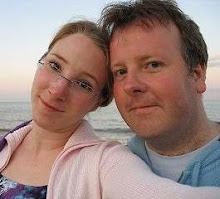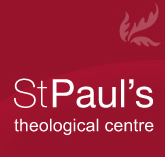Guest Post by Richard Bauckham - Ossuaries and Prosopography
One benefit of the debate over the alleged Jesus family tomb may be that it has got people interested in ossuaries and onomastics (the study of names) who had never thought about them before. The article by Christopher Rollston on the SBL Forum (‘Prosopography and the Talpiyot Yeshua Family Tomb: Pensees of a Palaeographer’) is particularly helpful in relating the debate to the wider issue of identifying people named in epigraphic sources (inscriptions on ossuaries and the like) with people known from the literary sources. He rightly stresses that scholars have become more cautious about this than some used to be.
It occurs to me it could be useful to look generally at all those instances in which names on ossuaries or tombs of the late Second Temple period have been identified with reasonable plausibility as individuals known from the literary sources (Josephus, rabbinic literature, New Testament). Some of these identifications have been all but universally accepted; others are still debated. In my judgment the list below is of the ones for which there is a good case. I have given references (pages in E or H) to useful discussions in these books: Craig E Evans, Jesus and the Ossuaries (Baylor University Press, 2003); Rachel Hachlili, Jewish Funerary Customs, Practices and Rites in the Second Temple Period (Brill, 2005). The latter, by the way, is a very informative work that I have not seen referred to in this debate; it has much more about tombs, ossuaries and inscriptions than the title might suggest (but frustratingly lacks proper indices).
- Theophilus the high priest, named on the ossuary of his granddaughter Yehohanah (E 108-9; H 173-4).
- Nicanor of Alexandria (E 91-94; H 172-3, 286).
- Queen Helene of Adiabene (called Sadah/Sadan on her tomb) (H 168-9).
- Simon son of Boethus and Martha daughter of Boethus (members of the high priestly family of Boethus) (E 111; H 263-4; Ilan 269-70).
- Joseph son of Caiaphas (E 104-8; H 264-8).
- Alexander son of Simon of Cyrene (E 94-96; H 279-82, 300).
- Ariston of Apamea (H 275-79, 300).
There may be other plausible cases I have missed.
It is notable that all except perhaps (6) are either members of the high priestly families or other seriously wealthy people. This reflects the bias of our sources (Josephus and rabbinic traditions) but also the use of ossuaries.
In every case there is something more than a very common name (or even combination of very common names) to make the identification plausible. In this respect they are all very different from the case of the alleged Jesus family tomb.
I think the case for (6) is probably ripe for a re-examination in the light of what we now know about the frequency of these names not only among Jews in Palestine but also among Jews in Cyrenaica.
Labels: Bauckham, Guest Post, Jesus Family Tomb








2 Comments:
Fascinating.
Prosopography, I could add for the sake of many readers (and to cite a webpage from the University of Oxford) can be defined as `an
independent science of social history embracing genealogy, onomastics
and demography'.
See also here
Post a Comment
<< Home